تعظيم العائد على الاستثمار: Activewear & يوجا ارتداء أسعار بالجملة ، هوامش البيع بالتجزئة & تحليل الربحية؟
إن فهم اقتصاديات Activewear أمر صعب. تكافح العديد من الشركات من أجل تسعير المنتجات بشكل مناسب ، مما يؤدي إلى سوء المبيعات (بسعر مرتفع جدًا) أو هوامش غير كافية (بسعر منخفض جدًا) تهدد الجدوى طويلة الأجل.
يوفر ActiveWear عادة هوامش صحية ، مع تكاليف الجملة تتراوح بين 8 و 25 دولارًا لكل وحدة حسب المواصفات. ينخفض أسعار البيع بالتجزئة عمومًا بين 30-120 دولارًا ، مما يسمح بهوامش 50-70 ٪. يمكن أن تؤدي خصومات الحجم واختيار المواد الفعالة والتشكيلة الاستراتيجية إلى زيادة الربحية.
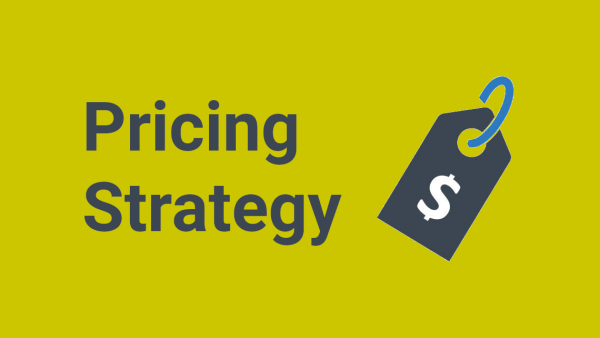
في وجودنا ، نعمل بشكل وثيق مع شركائنا لتحسين اقتصاديات ActiveWear الخاصة بهم. لقد أعطتنا خبرتنا في تصنيع أكثر من 30 مليون دولار في المبيعات السنوية لأكثر من 3000 متجر نظرة ثاقبة على استراتيجيات التسعير المختلفة عبر قطاعات السوق. اسمحوا لي أن أشارك ما تعلمناه حول زيادة العائد على الاستثمار في هذه الفئة المتنامية.
ما هي العوامل التي تحدد تكاليف الملابس النشطة؟
تقلل العديد من الشركات من تعقيد تكلفة الملابس النشطة. يعد فهم برامج تشغيل التكلفة الرئيسية أمرًا ضروريًا لاتخاذ قرارات مستنيرة بشأن تطوير المنتجات والتسعير.
تتأثر تكاليف الملابس النشطة بخمسة عوامل رئيسية: اختيار المواد (تكلفة الأقمشة التقنية أكثر من تلك الأساسية) ، وتعقيد البناء (المزيد من اللوحات وزيادة تكاليف الخياطة المتخصصة) ، وميزات الأداء (رطوبة الرطوبة ، والضغط ، وما إلى ذلك) ، وحجم الطلب (أوامر أكبر تقليل تكلفة الوحدة) ، ودرجة التخصيص. يمكن أن تخلق هذه العوامل تباينًا في التكلفة بنسبة 30-50 ٪ بين المنتجات الأساسية والمتميزة.
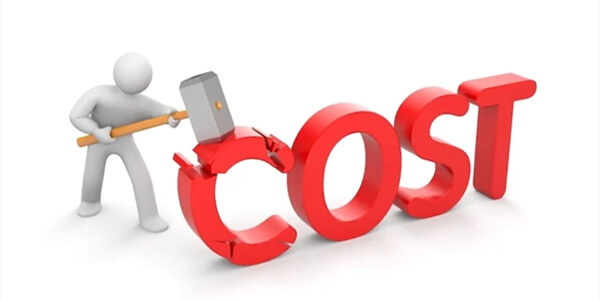
عندما نقوم بتطوير ActiveWear مع شركائنا في الحصول على ، نقوم بتحليل كل مكون التكلفة لتحديد فرص التحسين. فيما يلي انهيار مفصل للعوامل التي تؤثر على تكاليف المنتج:
عوامل تكلفة المواد
اختيار النسيج
| نوع المواد | التكلفة النسبية | تأثير التكلفة |
|---|---|---|
| البوليستر الأساسي/الإيلاستين | قليل | خط الأساس |
| نايلون قسط/إيلاستين | متوسطة | +15-25 ٪ |
| المواد المعاد تدويرها | متوسطة | +10-20 ٪ |
| أقمشة الأداء الفني | عالي | +20-40 ٪ |
ميزات الأداء
تضيف التحسينات الفنية تكلفة ولكن يمكن أن تبرر ارتفاع الأسعار:
- علاج الرطوبة: +5-10 ٪
- تقنية الضغط: +10-20 ٪
- العلاج المضاد للظهور: +5-15 ٪
- حماية الأشعة فوق البنفسجية: +5-10 ٪
- التكنولوجيا الجافة السريعة: +5-15 ٪
تعقيد البناء
تختلف تكاليف التصنيع بشكل كبير على تعقيد التصميم:
- البناء الأساسي: تخفيضات بسيطة مع تخيط قياسي (خط الأساس)
- التعقيد المعتدل: لوحات متعددة ، وبعض الخيول المتخصصة (+10-20 ٪)
- التعقيد العالي: العديد من اللوحات ، خياطة متخصصة واسعة النطاق (+20-30 ٪)
- البناء الفني: طبقات مسبقة ، ألواح معقدة ، ميزات خاصة (+30-50 ٪)
تأثير حجم الطلب
تؤثر وفورات الحجم بشكل كبير على تكاليف الوحدة:
- 500-1000 وحدة: سعر الأساس
- 1،001-3000 وحدة: 5-10 ٪ خصم
- 3،001-5000 وحدة: خصم 10-15 ٪
- 5،001-10،000 وحدة: 15-20 ٪ خصم
- 10000 وحدة: 20 ٪+ خصم (قابل للتفاوض)
يشرح هذا التوسع في مستوى الصوت كيف يمكن للعلامات التجارية الكبيرة أن تقدم ملابس نشطة بسعر أقل مع الحفاظ على الهوامش.
للحصول على معلومات مفصلة عن مواد الأزياء النشطة والتكنولوجيا التي تؤثر على التكاليف ، تفضل بزيارة دليلنا الشامل: Activewear & تقنية ارتداء اليوغا & المواد: دليل المشتري لأقمشة الأداء ، البناء & متانة.
كيف يجب أن تسعير ActiveWear في البيع بالتجزئة؟
يعد تحديد نقطة سعر التجزئة الأمثل أمرًا بالغ الأهمية لزيادة حجم المبيعات وهوامش الربح. تترك العديد من الشركات الأموال على الطاولة مع تسعير منخفض للغاية أو الحد من سوقها بأسعار مفرطة.
عادةً ما يتبع تسعير ActiveWear للبيع بالتجزئة ثلاث استراتيجيات رئيسية: التكلفة الزائدة (تطبيق العلامات القياسية على تكلفة الجملة) ، أو قائم على السوق (التوافق مع العروض التنافسية) ، أو قائم على القيمة (التسعير وفقًا لقيمة المستهلك المتصورة). تستخدم معظم العلامات التجارية الناجحة نهجًا هجينًا ، حيث عادةً ما تكون أسعار التجزئة من 2.2 إلى 3x بالجملة ، مما يؤدي إلى هوامش إجمالية من 55 إلى 70 ٪.
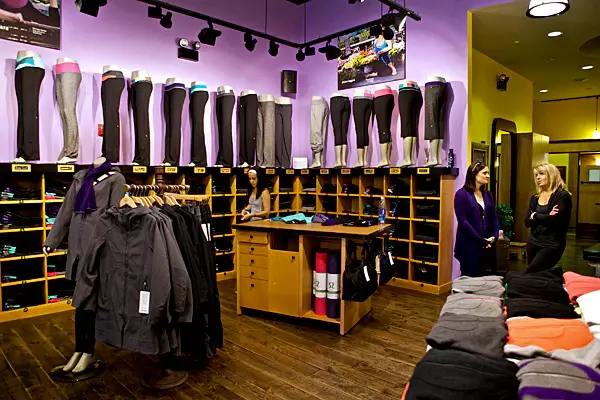
في الحصول على شركائنا ، نساعد شركائنا على تطوير استراتيجيات التسعير التي تعمل على تحسين الربحية مع بقاء تنافسية. إليك إرشاداتنا حول أساليب تسعير البيع بالتجزئة:
مقارنة استراتيجية التسعير
| استراتيجية التسعير | المزايا | عيوب | أفضل ل |
|---|---|---|---|
| التكلفة الزائد | بسيط ، يضمن الحد الأدنى من الهامش | يتجاهل ظروف السوق ، قد يترك المال على الطاولة | المنتجات الأساسية والأسواق الحساسة للأسعار |
| قائم على السوق | يضمن تحديد المواقع التنافسية | قد يضغط الهوامش ، يتبع بدلاً من العروض | قطاعات السوق المزدحمة ، منتجات مماثلة |
| تعتمد على القيمة | يزيد من إمكانات الربح ، ويعكس قيمة العلامة التجارية | يتطلب علامة تجارية قوية ، أكثر تعقيدًا لتحديدها | المنتجات المتميزة ، والميزات الفريدة ، والعلامات التجارية القوية |
| النهج الهجين | أرصدة احتياجات الهامش مع واقع السوق | يتطلب المزيد من التحليل والتكيف | معظم العلامات التجارية النشطة |
تحديد موقع السوق ونقاط الأسعار
عادةً ما تقع Activewear في أربعة قطاعات في السوق:
السوق الشامل (30-50 دولار البيع بالتجزئة)
- تكلفة الجملة النموذجية: $ 8-12
- عامل الترميز: 2.0-2.5x
- الهامش الإجمالي: 50-60 ٪
- دلائل الميزات: الوظيفة الأساسية ، المواد القياسية
- قنوات التوزيع: تجار التجزئة الجماعيين ، متاجر الخصم ، تجار التجزئة على الإنترنت على الإنترنت
منتصف السوق (50-80 دولار البيع بالتجزئة)
- تكلفة الجملة النموذجية: 12-18 دولار
- عامل الترميز: 2.5-3.0x
- الهامش الإجمالي: 60-67 ٪
- دلائل الميزات: مواد أفضل ، أداء محسّن ، المزيد من خيارات الأناقة
- قنوات التوزيع: المتاجر ، وتجار التجزئة المتخصصين ، والمستهلك المباشر
يمثل هذا الجزء أكبر جزء من السوق ويوفر أفضل توازن بين إمكانية الوصول والهامش.
قسط (80-120 دولار البيع بالتجزئة)
- تكلفة الجملة النموذجية: 18-25 دولار
- عامل الترميز: 2.8-3.2x
- الهامش الإجمالي: 65-70 ٪
- دلائل الميزات: المواد المتميزة ، التكنولوجيا المتقدمة ، الاستدامة المعززة
- قنوات التوزيع: تجار التجزئة المتخصصين ، متاجر ، مباشرة إلى المستهلك
يتطلب تحديد المواقع المتميزة تمايزًا واضحًا من خلال المواد أو التكنولوجيا أو قيمة العلامة التجارية.
الرفاهية (120 دولار+ البيع بالتجزئة)
- تكلفة الجملة النموذجية: $ 25+
- عامل الترميز: 3.0-3.5x
- الهامش الإجمالي: 67-72 ٪
- دلائل الميزات: مواد فاخرة ، تقنية متطورة ، تصاميم حصرية
- قنوات التوزيع: تجار التجزئة المتطورة ، متاجر فاخرة ، DTC Premium
هذا الجزء صغير ولكنه متزايد ، خاصة مع تعاون المصمم الذي يدخل الفئة.
للحصول على رؤى حول بناء خط إنتاج متوازن عبر نقاط السعر ، تفضل بزيارة دليلنا تنسيق مجموعتك: دليل B2B إلى ActiveWear & أنماط ارتداء اليوغا ، وظائف & خيارات المواد.
ما هو هوامش الربح التي يجب أن تستهدفها؟
تحديد أهداف الهامش المناسبة أمر ضروري لنمو الأعمال المستدامة. تركز العديد من الشركات فقط على الهوامش الإجمالية دون النظر في هيكل الهامش الكامل اللازم للربحية.
تستهدف شركات الأزياء الفعالة عادة الهوامش الإجمالية البالغة 55-70 ٪ ، وهوامش مساهمة من 40 إلى 55 ٪ (بعد تكاليف البيع المباشر) ، وصافي هوامش 10-20 ٪ (بعد جميع مصاريف التشغيل). تحقق العلامات التجارية المباشرة للمستهلكين بشكل عام هوامش أعلى من الشركات التي تركز بالجملة ، ولكنها تحمل تكاليف التسويق والوفاء أعلى.
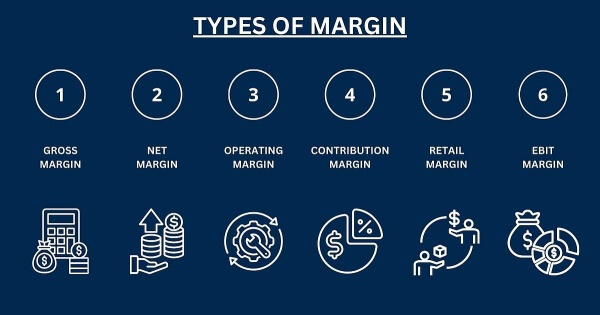
في الحصول على شركائنا ، نساعد شركائنا على تطوير هياكل الهامش التي تدعم النمو المستدام. إليك إرشاداتنا حول الهوامش المستهدفة في كل مستوى:
انهيار هيكل الهامش
الهامش الإجمالي
يمثل الهامش الإجمالي الفرق بين سعر التجزئة وتكلفة المنتج:
الهامش الإجمالي = (سعر التجزئة - COGS) ÷ سعر التجزئة
الهوامش الإجمالية المستهدفة بواسطة نموذج الأعمال:
- Mass Market Retail: 50-60 ٪
- تجارة التجزئة في منتصف السوق: 60-67 ٪
- مميز البيع بالتجزئة: 65-70 ٪
- المباشر للمستهلك: 70-80 ٪
هامش المساهمة
حسابات هامش المساهمة لتكاليف البيع المباشر:
هامش المساهمة = الهامش الإجمالي - تكاليف البيع المباشر
تشمل تكاليف البيع المباشرة عادة:
- بيع بالتجزئة: العمولات ، رسوم البيع بالتجزئة ، رسوم الرسوم (5-15 ٪)
- DTC: معالجة الدفع والشحن والوفاء (15-25 ٪)
هوامش المساهمة المستهدفة بواسطة نموذج الأعمال:
- توزيع التجزئة: 40-50 ٪
- المباشر للمستهلك: 45-55 ٪
الهامش الصافي
حسابات الهامش الصافية لجميع نفقات التشغيل:
الهامش الصافي = هامش المساهمة - نفقات التشغيل
تشمل نفقات التشغيل عادة:
- تسويق: 10-30 ٪ من الإيرادات (أعلى لـ DTC)
- النفقات العامة: 10-20 ٪ من الإيرادات
- تطوير المنتج: 3-8 ٪ من الإيرادات
الهوامش الصافية المستهدفة حسب نموذج الأعمال:
- العلامات التجارية للبيع بالتجزئة: 15-20 ٪
- تزايد العلامات التجارية DTC: 10-15 ٪
- العلامات التجارية المرحلة المبكرة: 5-10 ٪ (أو سلبية مؤقتًا خلال مرحلة النمو)
استراتيجيات تعزيز الهامش
يمكن للعديد من الاستراتيجيات تحسين الهوامش دون زيادة أسعار التجزئة:
تحسين التكلفة
- هندسة المواد: تحسين مواصفات المواد دون المساس بالجودة
- كفاءة البناء: تبسيط عمليات التصنيع
- توحيد الحجم: الجمع بين الطلبات عبر الأساليب للحصول على تسعير أفضل
- توحيد المكون: استخدام مواد شائعة عبر أنماط متعددة
تعزيز الإيرادات
- تسعير الحزمة: تشجيع عمليات الشراء متعددة الوحدات في الأسعار المنخفضة لكل وحدة
- نماذج الاشتراك: إنشاء إيرادات متكررة بخصومات متواضعة
- انخفاض: إضافة ملحقات الهامش الأعلى (زجاجات المياه ، والأكياس ، والمعدات)
- مزيج المبيعات المباشر: زيادة النسبة المئوية للمبيعات المباشرة إلى المستهلك
للحصول على معلومات حول تطوير خط الملصق الخاص بك ActiveWear مع الهوامش المثلى ، تفضل بزيارة موردنا التفصيلي: علامتك التجارية ، منتجك: الدليل الكامل للملصقات الخاصة (OEM/ODM) Activewear & اليوغا ارتداء التصنيع.
كيف يمكنك تحليل ربحية ActiveWear؟
تفتقر العديد من الشركات إلى أدوات فعالة لتحليل ربحية المنتج. بدون التحليل المناسب ، من الصعب تحديد المنتجات والقنوات والاستراتيجيات التي تقدم أفضل العائدات.
يجب أن يشمل تحليل الربحية الشامل للملابس النشطة تحليل مساهمة على مستوى المنتج (تحديد الأنماط والميزات التي تولد أكبر ربح) ، ومقارنة ربحية القناة (التجزئة مقابل DTC مقابل الجملة) ، وتقييم تكلفة اكتساب العملاء ، وحساب قيمة مدى الحياة لتحديد العوائد الحقيقية على المدى الطويل.
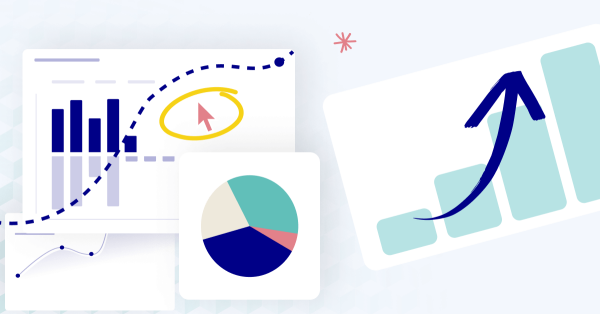
في وجود ، نساعد شركائنا على تنفيذ الأطر التحليلية التي توفر رؤى قابلة للتنفيذ. فيما يلي التحليلات الرئيسية التي نوصي بها:
تحليل المساهمة على مستوى المنتج
تقييم مساهمة الربح لكل منتج في خطك:
مساهمة المنتج = (سعر الوحدة - COGS وحدة - تكاليف البيع المباشر) × الحجم
غالبًا ما يكشف هذا التحليل عن رؤى مفاجئة:
- قد تساهم الأنماط الأساسية ذات الحجم الكبير في زيادة الأرباح على الرغم من الهوامش المنخفضة
- قد تقدم الأنماط المميزة هوامش أعلى ولكن أقل إجمالية مساهمة بسبب الحجم
- قد لا تبرر بعض الميزات تكلفتها بناءً على استعداد المستهلك للدفع
مصفوفة الربحية نمط
إنشاء مصفوفة تقارن نسبة الهامش وحجم المبيعات:
| فئة | صفات | الاستراتيجية |
|---|---|---|
| النجوم (الهامش العالي ، الحجم الكبير) | الأساليب الأساسية مع الطلب القوي والهوامش الجيدة | الاستثمار في النمو وتوسيع الاختلافات |
| الأبقار النقدية (الهامش المنخفض ، حجم كبير) | الأساليب الأساسية التي تبيع بشكل جيد ولكن على هوامش أقل | تحسين التكاليف ، الحفاظ على الموقف |
| علامات الاستفهام (الهامش العالي ، حجم منخفض) | المنتجات المتميزة مع مبيعات محتملة ولكن محدودة | زيادة التسويق أو إعادة النظر في المواقع |
| الكلاب (الهامش المنخفض ، حجم منخفض) | الأساليب ذات الأداء الضعيف مع اقتصاديات فقيرة | التوقف أو إعادة التصميم بالكامل |
مقارنة ربحية القناة
قنوات المبيعات المختلفة لها ملفات تعريف ربحية مميزة:
مساهمة القناة = إجمالي إيرادات القناة - (تكاليف COGS + الخاصة بالقناة)
تتضمن النتائج النموذجية:
- تقدم DTC أعلى الهوامش ولكن لديها ارتفاع تكاليف التسويق والوفاء
- يوفر البيع بالتجزئة حجمًا ولكن له هوامش أقل وأقل سيطرة
- يقدم الجملة أوامر يمكن التنبؤ بها ولكن أقل هوامش
تحليل تكلفة اكتساب العملاء
للمبيعات المباشرة للمستهلك ، تحليل كفاءة الاستحواذ:
CAC = تنفق التسويق الكلي ÷ الحصول على عملاء جدد
CAC القياسي ضد معايير الصناعة:
- فعال: CAC < 30 ٪ من قيمة الشراء الأولى
- مستمر: CAC = 30-50 ٪ من قيمة الشراء الأولى
- بخصوص: CAC > 50 ٪ من قيمة الشراء الأولى
حساب قيمة عمر العميل
احسب القيمة طويلة الأجل للعملاء:
LTV = متوسط قيمة الطلب × تردد الشراء × عمر العميل × الهامش
ActiveWear لديها خصائص LTV مواتية:
- دورة الاستبدال: عادة 6-12 شهرًا للعناصر الأساسية
- مبيعا: فرصة لفئات المنتجات المتعددة
- فئة التوسع: القدرة على التوسع في منتجات اللياقة البدنية ذات الصلة
للحصول على رؤى السوق التي يمكن أن تُعلم استراتيجية الربحية الخاصة بك ، تفضل بزيارة تحليلنا التفصيلي: فهم الملابس النشطة & سوق ملابس اليوغا: الاتجاهات ، التركيبة السكانية & فرص المشترين B2B.
حالة العمل للملابس النشطة المستدامة
إن المخاوف البيئية تدفع بشكل متزايد قرارات شراء المستهلكين. العلامات التجارية التي تتجاهل مخاطر الاستدامة التي تخسر حصة السوق لمزيد من المنافسين الواعيين للبيئة.
يمثل Activewear المستدامة كل من الضرورة البيئية وفرصة العمل. 67 ٪ من المستهلكين يعتبرون الاستدامة عند شراء الملابس النشطة ، و 73 ٪ على استعداد لدفع المزيد مقابل المنتجات المستدامة. العلامات التجارية التي تتضمن المواد المعاد تدويرها أو القطن العضوي أو الأقمشة القابلة للتحلل يمكن أن تطلب تسعيرًا متميزًا مع جذب المستهلكين الواعيين.
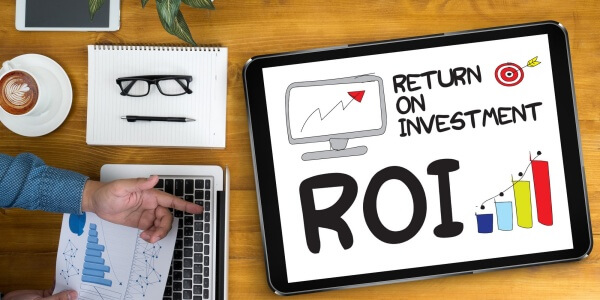
في وجودنا ، اعتنقنا الاستدامة في تصنيع ActiveWear ، حيث نقدم خيارات البوليستر المعاد تدويرها ، ومزيج من القطن العضوي ، وحلول التغليف الصديقة للبيئة. يتردد هذا الالتزام بقوة مع المستهلكين ويعزز قيمة العلامة التجارية.
الفوائد المالية للاستدامة
تظهر أبحاث السوق أن المستهلكين سيدفعون المزيد مقابل المنتجات المستدامة:
- 67 ٪ سيدفعون ما لا يقل عن 10 ٪ على الأزياء النشطة المستدامة
- 32 ٪ سيدفعون 25 ٪ أو أكثر للمنتجات ذات بيانات اعتماد بيئية قوية
- عادة ما ترى العلامات التجارية المستدامة للأزياء النشطة أقساط أسعار تتراوح بين 15 و 30 ٪
إطار حساب العائد على الاستثمار
عند تقييم استثمارات الاستدامة ، فكر في هذا الإطار:
| فئة الاستثمار | زيادة التكاليف النموذجية | عودة محتملة | فترة الاسترداد |
|---|---|---|---|
| المواد المعاد تدويرها | 10-20 ٪ | 15-25 ٪ قسط السعر | فوري إلى 6 أشهر |
| المواد العضوية | 15-25 ٪ | 20-30 ٪ أقساط الأسعار | فوري إلى 6 أشهر |
| عبوة مستدامة | 5-15 ٪ | 5-10 ٪ تحسين التحويل | 6-12 أشهر |
| شهادة الاستدامة | 2000-10،000 دولار سنويا | زيادة 10-20 ٪ من متاجر التجزئة | 6-18 أشهر |
للحصول على تحليل مفصل لفوائد الأعمال التجارية المستدامة ، تفضل بزيارة دليلنا المتخصص: حالة العمل للملابس النشطة المستدامة & ارتداء اليوغا: تلبية الطلب على المستهلك & تعزيز قيمة العلامة التجارية.
خاتمة
يتطلب تعظيم العائد على الاستثمار في فئة ActiveWear مقاربة استراتيجية للتسعير والهوامش وتحليل الربحية. من خلال فهم محركات التكلفة ، وتنفيذ استراتيجيات التسعير المناسبة ، واستهداف هياكل الهامش الصحية ، وإجراء تحليل ربحية منتظمة ، يمكن للشركات بناء عمليات مستدامة ومربحة في هذا السوق المتنامي.
في الحصول على خبرة التصنيع مع رؤى تجارية لمساعدة شركائنا على تحسين اقتصاديات ActiveWear الخاصة بهم وتحقيق النجاح طويل الأجل.
للحصول على نظرة عامة شاملة على فئة ActiveWear بأكملها ، بما في ذلك اتجاهات السوق وفرص العمل ، تفضل بزيارة دليل B2B النهائي للمصادر & بيع Activewear & ارتداء اليوغا.
الأسئلة المتداولة (الأسئلة الشائعة)
ما هو مضاعف الترميز النموذجي للملابس النشطة؟
تستخدم أكثر العلامات التجارية الناجحة للأزياء الناجحة مضاعفًا لـ Markup بتكلفة الجملة 2.2-3.0x لتسعير التجزئة. تستخدم منتجات السوق الشامل عادة مضاعفات أقل (2.0-2.5x) ، في حين يمكن للعلامات التجارية المتميزة أن تطلب مضاعفات أعلى (2.8-3.5x).
كيف تقارن هوامش ActiveWear بالملابس التقليدية؟
يوفر ActiveWear عادة هوامش إجمالية أعلى من 5 إلى 10 ٪ من الملابس التقليدية بسبب طبيعتها التقنية وتقديم القيمة. على الرغم من أن تكاليف الإنتاج أعلى ، فإن الفوائد الوظيفية تبرر التسعير المتميز الذي يزيد من هذه التكاليف.
ما هي فئة الملابس النشطة الأكثر ربحية؟
عادة ما تولد اللباس الداخلي أعلى مساهمة في الربح بسبب مزيج من هوامش قوية (60-70 ٪) وحجم مبيعات مرتفع. تتبع حمالات الصدر الرياضية عن كثب ، مع هوامش قوية بشكل خاص في الجزء الممتاز.
كيف يجب أن أسعار عبوات متعددة من الأزياء النشطة؟
عادة ما توفر الحزم المتعددة خصمًا بنسبة 10-15 ٪ مقارنة بأسعار الشراء الفردية. تعتبر الحزمان والعبوات ثلاثية أكثر تكوينات الحزمة شيوعًا ، مما يوفر تنوعًا كافيًا مع توفير وفورات ذات معنى لتحفيز عمليات الشراء الأكبر.
ما هي تكلفة اكتساب العملاء الصحية (CAC) لـ Activewear؟
للحصول على علامات تجارية ActiveWear المباشرة للمستهلك ، تتراوح CAC الصحية عادةً بين 30-50 دولارًا ، وهي تمثل 30-50 ٪ من قيمة الشراء الأولى. يسمح ذلك بالربحية في غضون 2-3 أوامر ، والتي تتوافق مع أنماط الاحتفاظ بالعملاء النموذجية.
كيف تؤثر المواد المستدامة على هوامش الملابس النشطة؟
عادة ما تزيد المواد المستدامة من التكاليف بنسبة 10-25 ٪ ولكن يمكن أن تطلب أقساط أسعار 15-30 ٪ ، مما قد يزيد من الهوامش الإجمالية بنسبة 5-10 ٪ عند تسويقها بشكل صحيح للمستهلكين الواعيين بيئيًا.
